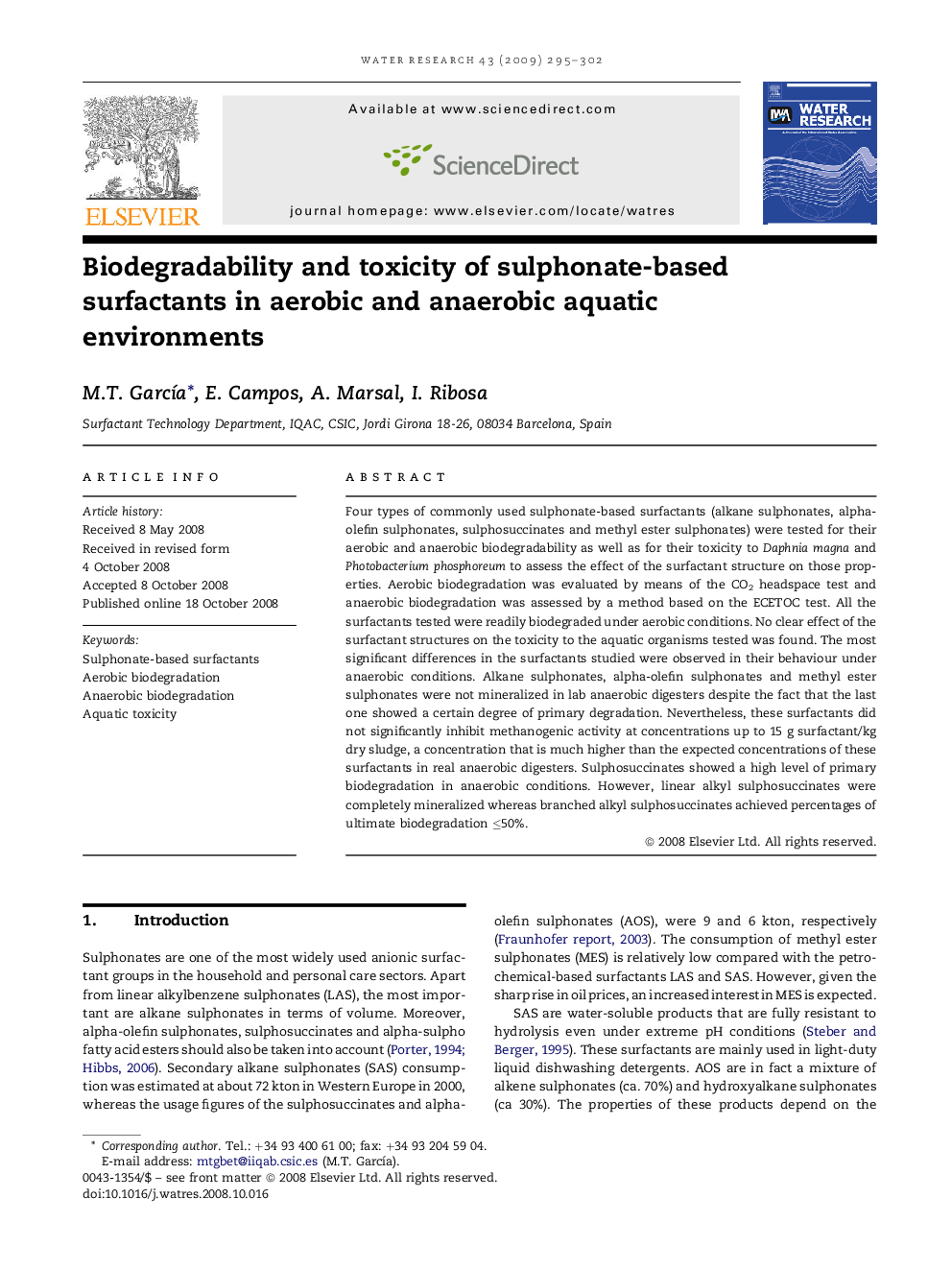| Article ID | Journal | Published Year | Pages | File Type |
|---|---|---|---|---|
| 4484428 | Water Research | 2009 | 8 Pages |
Four types of commonly used sulphonate-based surfactants (alkane sulphonates, alpha-olefin sulphonates, sulphosuccinates and methyl ester sulphonates) were tested for their aerobic and anaerobic biodegradability as well as for their toxicity to Daphnia magna and Photobacterium phosphoreum to assess the effect of the surfactant structure on those properties. Aerobic biodegradation was evaluated by means of the CO2 headspace test and anaerobic biodegradation was assessed by a method based on the ECETOC test. All the surfactants tested were readily biodegraded under aerobic conditions. No clear effect of the surfactant structures on the toxicity to the aquatic organisms tested was found. The most significant differences in the surfactants studied were observed in their behaviour under anaerobic conditions. Alkane sulphonates, alpha-olefin sulphonates and methyl ester sulphonates were not mineralized in lab anaerobic digesters despite the fact that the last one showed a certain degree of primary degradation. Nevertheless, these surfactants did not significantly inhibit methanogenic activity at concentrations up to 15 g surfactant/kg dry sludge, a concentration that is much higher than the expected concentrations of these surfactants in real anaerobic digesters. Sulphosuccinates showed a high level of primary biodegradation in anaerobic conditions. However, linear alkyl sulphosuccinates were completely mineralized whereas branched alkyl sulphosuccinates achieved percentages of ultimate biodegradation ≤50%.
